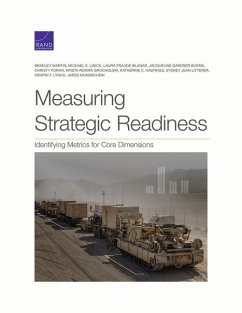
Understanding, Managing, and Reporting U.S. Space Force Readiness
Versandkostenfrei!
Versandfertig in über 4 Wochen
37,99 €
inkl. MwSt.

PAYBACK Punkte
19 °P sammeln!
As a branch of the U.S. military, the U.S. Space Force (USSF) must understand, manage, and report its readiness. The authors of this report have created a readiness framework for the USSF and instructions on how to implement it.














